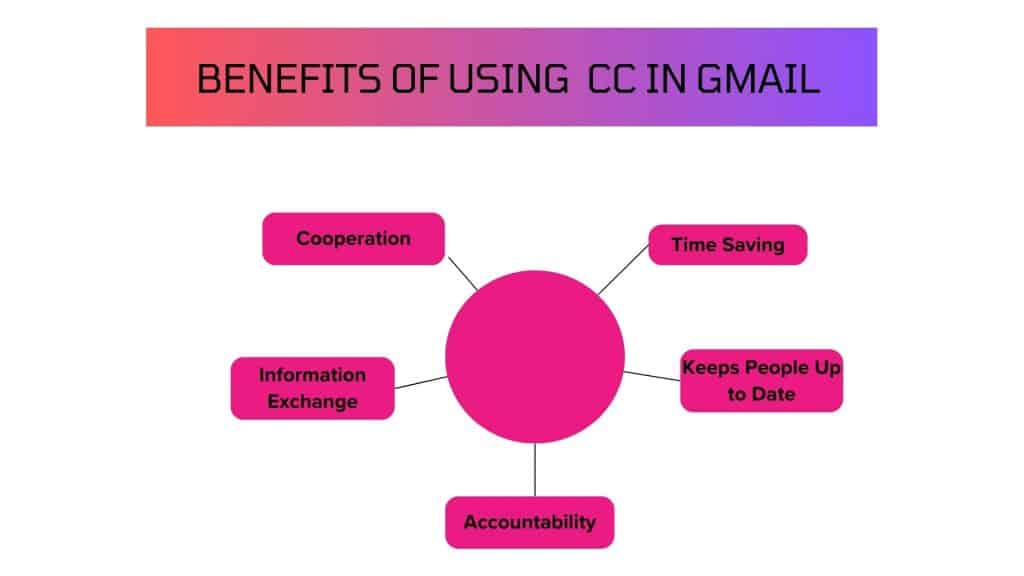Have you ever found yourself in a situation where effective communication is difficult because of your unfamiliarity with certain email tools or features? Don’t worry; you’re not alone. In today’s digital world, mastering email tools, like “CC” (carbon copy), is essential for an entrepreneur, business owner, or just an individual, as it ensures a proper smooth flow of communication. So, whether you are using Gmail on an Android, iPhone, or desktop, knowing how to use this email tool, “CC,” can significantly improve your communication efficiency.
In this step-by-step guide, I will walk you through what CCs are all about and how to use CC in Gmail using your mobile, iPhone, or desktop. So, by the end of this guide, you will be able to use this feature effortlessly. Let’s get into it!
Key Points
- Carbon copy, popularly known as “CC ” is a means of including more people in email exchanges or sending them a copy of a crucial communication.
- As a business owner, CC is essential for you as it ensures a proper smooth flow of communication.
- CC is useful in situations where the user wants to tell someone about a topic without requiring them to take any particular action.
- The difference between CC and BCC is that with CC, you can view a list of recipients; however, with BCC that feature is not present.
What is a CC in Gmail?
In Gmail, “CC” stands for “copying.”. It is the process of copying an email to one or more recipients while also sending a copy of the original message to another recipient. This Gmail feature is a practical means of including more people in email exchanges or sending them a copy of a crucial communication. In other words, anyone who is copied on a message receives it along with the main recipients, but they won’t be able to participate in any discussion about the message.
This tool comes in handy in many circumstances, like when one needs to share information with a group of individuals without needing their response. Hence, understanding how to use Gmail’s CC tool is essential for both personal and business communications.
More importantly, it’s important to exercise caution when using the CC feature and to refrain from sending recipients an excessive amount of messages. Adding too many recipients to the CC field floods inboxes and causes important messages to be lost in the shuffle. Therefore, it’s a good idea to only use the CC feature when necessary.
Is There a Limit to How Many Emails You Can CC in Gmail?
Yes, there is a limit on the number of emails in Gmail that you can copy and paste. According to the Gmail Help Center, CC exceeds the maximum of 500 recipients in a single email or the maximum of 500 recipients in a single day. Although Google does not make the exact restriction publicly available, it is known to change depending on several different factors.
The volume of data being transferred is one element that affects the limit. When CC has a large number of users, a lot of data is delivered, slowing down and eventually crashing the email server. To prevent spam or improper use, Gmail limits the number of recipients when a sender uses CC to send the same email to several recipients.
What Is the Difference Between CC and BCC?
The difference between the two is that with CC, you can view a list of recipients; however, with BCC that feature is not present. This is the main distinction between the two.
It is also important to note that while CC and BCC are used in Gmail, they must be used correctly. Adding too many people to an email chain with CC, for example, floods inboxes and comes across as unskilled. It is improper to use BCC to obscure recipients in a group email without their permission. As a result, CC and BCC handle email recipients differently in Gmail. While BCC keeps the recipient’s email address private from other recipients, CC lets recipients view everyone in the email chain. In other words, both need to be used correctly to guarantee good communication and prevent any unfavorable effects.
Read also: Gmail vs. Outlook: A Personal Journey through the Inbox
Now that you have understood the clear definition of CC in Gmail, I will explain to you in detail how to CC in Gmail using mobile, iPhone, and desktop.
How to CC in Gmail Using Mobile and Desktop
If you want to create a CC in Gmail using your mobile or desktop. Here are the five steps you should take:
#1. Compose the Message in Gmail
If you’re using a desktop, open your web browser, go to the Gmail website, and sign in to your account. However, if you’re using your mobile device, you can use the Gmail app or access the website using your mobile browser.
The “compose new message” button should appear in the upper left corner of your screen after you launch the app or load your page. You may just notice a multicolored + symbol at the bottom of the Gmail app page. This compose button allows you to write new messages. Press this button to start writing your message.
#2. Input your CC and Primary Contacts
Here, you will see a section titled “To:” Enter the primary recipient for your email in that section. This could be the intended recipient of the email, or it could be a recipient that pops up as you type if you have a lot of recipients. Once you do that, you can navigate to the CC button, which is located next to the BCC option in the upper right-hand corner of the new message window.
Now, you can start adding more recipients. If your contacts are synchronized with Google contacts, you can enter names or use complete email addresses for contacts that are not in your Gmail contacts.
#3. Fill out and Send Your Email
Once you’re done reviewing your email, you can press the ” send” button. This sends the email to everyone you’ve copied in the previous step. Meanwhile, to make sure it gets delivered, check for the “message sent” notification in your browser window; while using your mobile, go to your Gmail account’s sent folder to check. In addition, CCs can reply to you directly from the email or to the group as a whole, so you might receive emails from addresses that aren’t typically visible in your inbox.
#4. Reply with a CC
You can take similar actions if you need to CC other individuals in an email reply. Locate the CC option when you open the email you received. This could be found on a mobile device under the pull-down menu that is normally found in the message’s right-hand corner. To include your contacts in the message, click CC.
In addition, you have the option of contacting the email address of the receiver by clicking “reply” within the message. To add more contacts to the discussion, click the CC icon and the down arrow that displays.
You may want to see: GMAIL BUSINESS: How it Works & How to Create it
How to CC in Gmail Using iPhone
Adding a CC to Gmail on an iPhone is much the same approach with mobile and desktop, as explained above. Here is how to CC in Gmail using an iPhone device.
- Launch Gmail on your iPhone or iPad.
- Click on Login to access your account.
- Next, click on Compose, located in the lower right corner of your screen.
- Compose your email, and enter the name of your major recipient in the “To” field.
- Tap the little arrow next to your primary recipient’s email address, so the CC field will show up.
- Provide the recipient’s email address in the CC field.
- Click “Send.”
See also: BEST EMAIL MARKETING SERVICES FOR NONPROFITS: The Top 15 (+ Free Tips)
And voila! You’re good to go. So what’s the benefit of using CC in Gmail? Stick with me as I explain it succinctly below.
Benefits of Using CC in Gmail?

The benefits of using CC in Gmail include the following:
#1. Cooperation
When working on a project involving several people, it’s critical to keep everyone updated on the project’s status and any updates that are made. This is to ensure that everyone is working toward the same goals, CC is used to make sure that everyone is on the same page.
#2. Information Exchange
CC is used to disseminate information and share it with others. All you need to do is simply include them in the CC section of the email. They can view the data without having to directly request it.
#3. Time-saving
When sending a message to several recipients, you can use CC to avoid sending an individual email to each recipient. When a user has to send the same message to multiple recipients who are not on the same email list or group, it is indeed a time-saving technique.
#4. Keeps People up to Date
CC helps inform others about updates. Even though they are not the intended recipient, the user can include someone else in the CC area, send them a copy of the message, and let them see the entire conversation. It is useful in situations where the user wants to tell someone about a topic without requiring them to take any particular action.
#5. Accountability
It is easier to establish accountability for the discussion or project when individuals are included in the CC field. It indicates that everyone is conscious of what has been said or done and, if required, responds appropriately.
How Do I CC Someone on an Email I Already Sent in Gmail?
Gmail does not allow you to CC a copy of an email. The second email will not be known as the original one that was sent. You can, however, forward the email to the other recipient.
Is Forwarding the Same as CC?
No, they are not the same. When you forward an email, the original sender will never be aware that the message has been transferred to another destination. The sender will only receive a copy of the email if their email address is entered in the “Cc” or “Bcc” field in the forwarded email message.
Can You Add Someone to an Email After It Has Been Sent?
Yes, you can use the “Add CC” button to include someone in an email after it has been sent.
How Many Recipients Can You CC on Gmail?
You can CC up to 2000 receipts in Gmail. However, you are allowed to have up to 500 receivers outside of your primary domain. This restriction applies to Google Workspace and personal Gmail accounts.
References
- yamm.com
- indeed.com
- mailmeteor.com
- Close Corporation: Overview, Definition, Comparisons, Pros & Cons
- BEST EMAIL MARKETING SERVICES FOR NONPROFITS: The Top 15 (+ Free Tips)
- GMAIL BUSINESS: How it Works & How to Create it
- BEST MOTORCYCLE BRANDS: Top 21 Brands in the World for Beginners & Pros
- Gmail vs. Outlook: A Personal Journey through the Inbox






